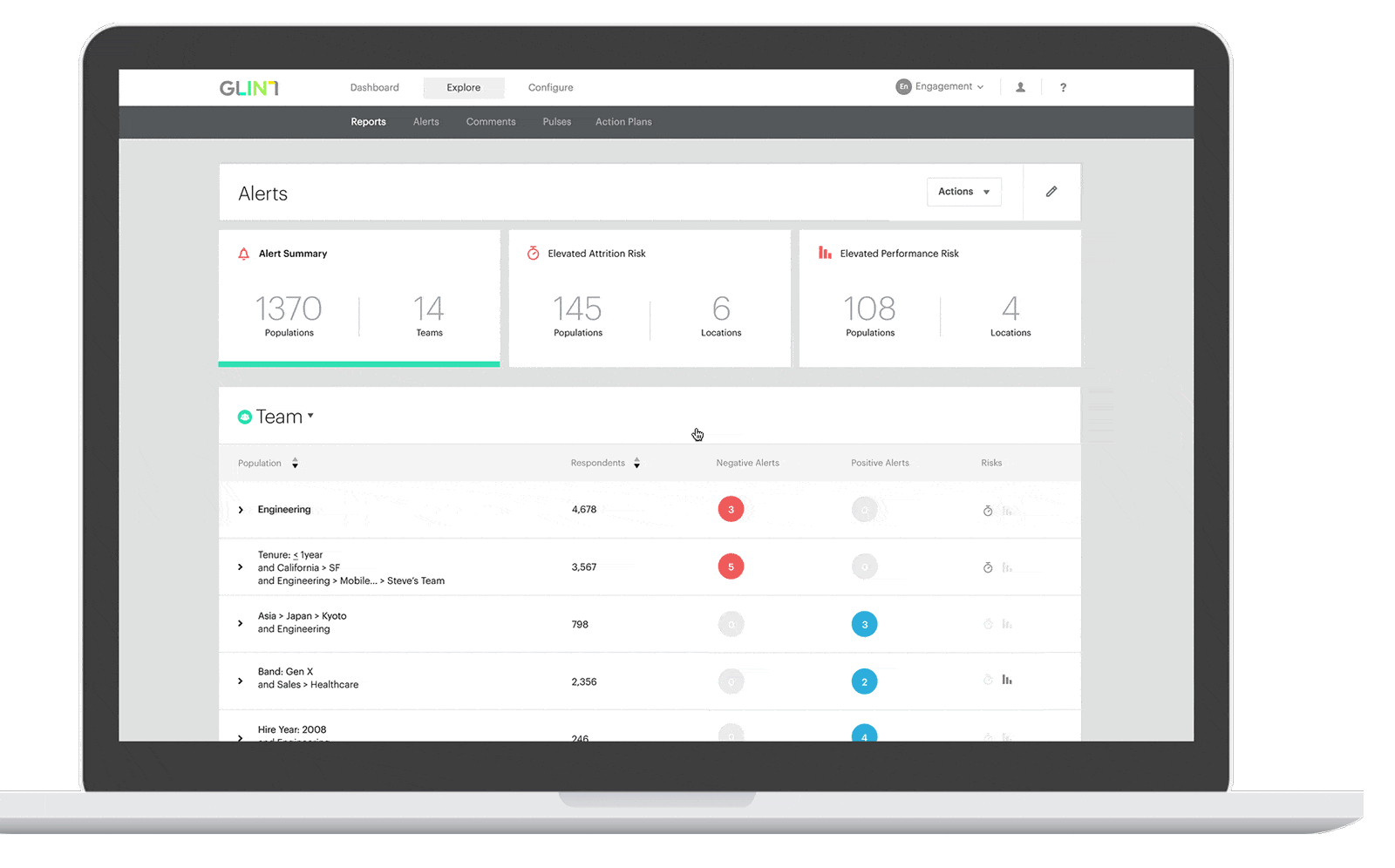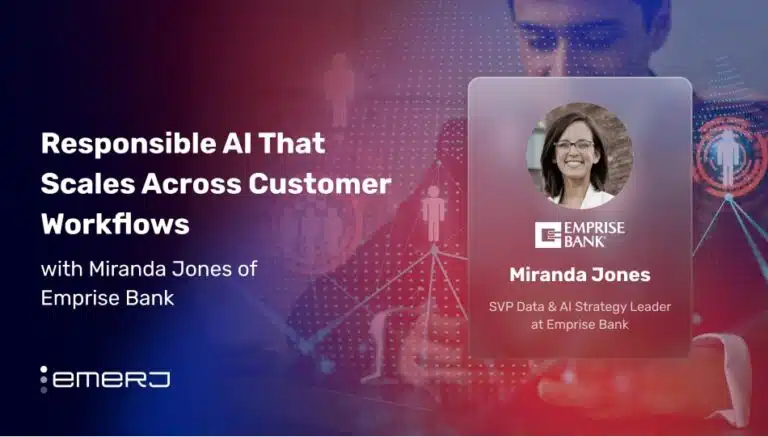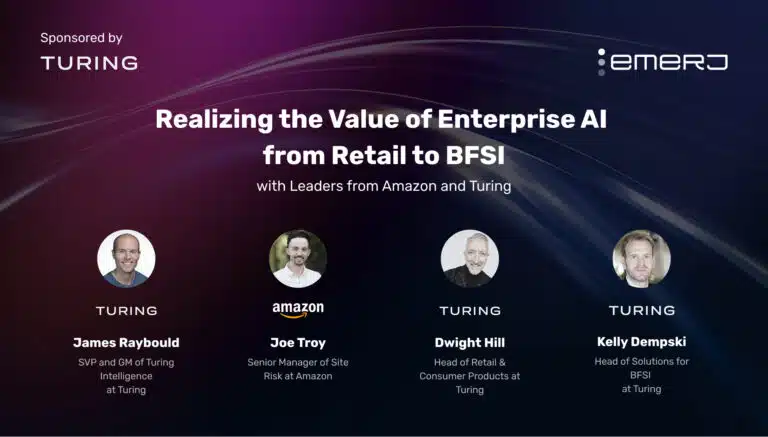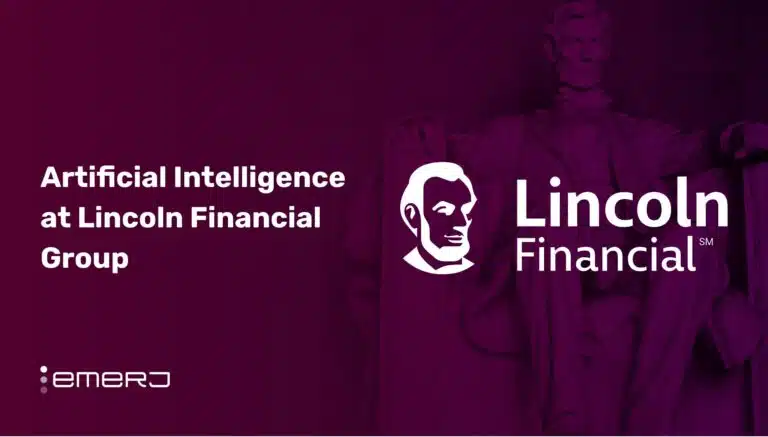Human resources has been slower to come to the table with machine learning and artificial intelligence than other fields—marketing, communications, even health care. But the value of machine learning in human resources can now be measured, thanks to advances in algorithms that can predict employee attrition, for example, or deep learning neural networks that are edging toward more transparent reasoning in showing why a particular result or conclusion was made.
The value beyond numbers for CEOs and managers is the power in understanding what’s actually happening within a company i.e. with their people. As Glint’s Justin Black articulated in a webinar for the Human Capital Institute (HCI), executives and leaders need information that helps them point people in the right direction; information—sales data, KPIs, etc.—change over time, and machine learning can react faster than people in helping draw out the insights and inferences that might otherwise take reams of manpower or not be uncovered at all.
Though not an exhaustive list, below is an outline of solid examples of machine learning and artificial intelligence applications at work in human resources today, along with developing and near-future applications.
Current Machine Learning Human Resources Applications
Applicant Tracking & Assessment
Applicant tracking and assessment has topped the list in early machine learning applications, especially for companies and roles that receive high volumes of applicants. Glint is not an AI company, but they use AI tools to help companies save money and provide a better work experience. Machine learning tools help HR and management personnel hire new team members by tracking a candidate’s journey throughout the interview process and helping speed up the process of getting streamlined feedback to applicants.
Peoplise is another solution for helping companies calculate fit score for new talent, combining tools like digital screening and online interview results to help hiring managers arrive at decisions.
While competition for the best people has driven many HR departments to use algorithmic-based assessments, a CEB article on using machine learning to eliminate bias cautions that human oversight is still of paramount importance. It’s not enough to act directly on data insights, but to use this information in tandem with driving question such as: 1) how I can link applicant traits to business outcomes; 2) which outcomes should be our focus when hiring; and 3) can predictions (hiring and otherwise) be made in an unbiased way.
Attracting Talent
Attracting talent before hiring has also seen an upswing in machine-learning based applications in the past few years. Black, who is Glint’s senior director of Organizational Development, named LinkedIn as an example of a company using one of the most common versions of basic machine learning—recommending jobs. Other job-finding sites, including Indeed, Glassdoor, and Seek use similar algorithms to build interaction maps based on users’ data from previous searches, connections, posts, and clicks.
PhenomPeople is one example of a suite of machine learning-based tools that helps lead potential talent to a company’s career site through multiple social media and job search channels. Black notes that this is really just one step past a keyword search, albeit a big step computationally, as there’s a lot more to do.
Attrition Detection
Understanding people and why they decide to stay at or leave a job is arguably one of the most important questions for HR to answer. Identifying attrition risk calls for advanced pattern recognition in surveying an array of variables.
In the earlier mentioned HCI webinar, Black describes a hypothetical situation of identifying specific risk factors based on scores to an employee survey. If a human were to try and detect attrition risk among female engineers in Palo Alto with less than 2 years of tenure, the variance analyses to reach that conclusion are innumerable, like finding a needle in haystack, but machine learning allows us to connect these dots in seconds, freeing HR representatives to spend time supporting teams instead of analyzing data.

Glint’s employee engagement platform
Advances in NLP have included the ability to process large amounts of unstructured data, and algorithms can also do things like identify emotional activity in comments and tease out prescriptive comments, or actionable suggestions. Black describes “prototypicality” algorithms that can pull out individual comments that represent the sum of what everyone’s saying, allowing companies to get a broadly inclusive but digestible pulse on company processes and specific issues.
JPMorgan is apparently one of several financial institutions that has also put into place algorithms that can survey employee behavior and identify “rogue employees” before any criminal activity takes place, an obviously more insidious form of attrition with dire consequences—watch the interview with Bloomberg Reporter Hugh Son as he discusses these new safeguards with Bloomberg Technology.
Individual Skills Management/Performance Development
Machine learning is showing its potential in boosting individual skill management and development. While there is definitely room for growth in this arena, platforms that can give calibrated guidance without human coaches save time and provide the opportunity for more people to grow in their careers and stay engaged. Workday is just one example of a company building personalized training recommendations for employees based on a company’s needs, market trends, and employee specifics.
Black elaborates that these types of performance development assessments are useful when actually read, which is why this type of machine-based feedback has been successful for individuals. But this becomes more difficult at the level of the organization, where it’s almost impossible to make sense of enormous amounts of varying data; this is an area where machine learning is evolving, with an increased focus on the overall performance of the corporate lattice.
Future Machine Learning Human Resources Applications
Enterprise Management
As alluded to in the last example, enterprise management and engagement based on machine learning insights is already here in early forms but has yet to be taken to scale. KPMG promotes its customized “Intelligent Enterprise Approach”, leveraging predictive analytics and big data management to help companies make business decisions that optimize key KPIs and other metrics. re:Work, which provides best workplace practices and ideas from Google and other leading organizations (including KPMG), is an excellent resource for staying up-to-date on new tools and case studies in this space.
Google’s People Analytics department has been a pioneer in building performance-management engines at the enterprise level. From an early stage, the team (led by Prasad Setty) posed existing questions—for example, what’s the ideal size for a given team or department—but focused on finding new ways to use data in order to help answer these questions. In turn, People Analytics has helped pave the way for solving fundamental business problems related to the employee life cycle, with a focus on improving “Googlers'” production and overall wellness. As outline by Chris Derose for The Atlantic, over the last half of a decade, the team has produced insights that have led to improvements in company-wide actions, such as:
- Limiting the number of interviews required for an applicant (more than four didn’t lead to higher quality)
- Revealing optimal organizational size and department size
- Better managing of maternity leave (Google saw a 50 percent decrease in defections)
- Creating on-boarding agenda for an employee’s first four days of work, with increased productivity levels of up to 15 percent
Post-Hire Outcome Algorithms
CEB notes that the ideal hiring algorithm would predict a post-hire outcome (for example, reducing time taking customer service calls while keeping customer satisfaction high) rather than just matching job requirements with items on an employee’s resume or pre-hire assessment results.
The article goes on to note that it’s sometimes the counterintuitive aspects that predict job performance, information that a machine is better at finding through analysis than human inference. For example, CEB describes a model created for a call center representative role that linked call center experience to resulting poor performance. While a link to the source or actual model would be helpful, the idea is interesting and reflects machine learning’s strengths in “invisible” pattern recognition
Internal Management
When Talent Analytics Chief Scientist Pasha Roberts discussed the role of predictive analytics in human resource management with Emerj in 2016, he brought up the internal movement of employees within a company as an issue unique to HR and analytics. “You can use agent-based modeling to simulate and look at how people can move within a company…and be better able to hire a person at the entry-level that will be likely to move through corporate ladder,” said Roberts. While there are early systems in place, more data over time should lead to a more robust and scalable model for internal management over the next five years.
Increased Behavior Tracking and Data-Based Decision Making
Ben Waber, president and CEO of Humanyze and also a past guest on Emerj, talked about the increasing use of IoT wearable data in the workplace. These types of gadgets are more common at the enterprise level—bluetooth headphones and smart ID badges, for example—and companies are continuing to add sensor technology to the workplace in order to collect data. This is an area that Waber researched while serving as a visiting scientist at the MIT Media Lab, using data collected from smart badges to look at things like employee dialogue, interaction, networks within a company, where people spent their time, etc. It would seem that privacy might be a concern, but technologies like smart badges are starting to proliferate quickly (with vendors like Atmel, in the below video, introducing new and updated apps for Android phones). This type of data, says Waber, allows us to pose and answer crucial business-driving questions that we couldn’t ask before, such as ‘how much does my sales team talk to my engineering team?’
Things to Keep in Mind: Machine Learning in Human Resources
Google People Analytics Lead, Ian O’Keefe, told a story at the People Analytics & Future of Work conference in January 2016 about his team’s efforts to quantify things like efficiency, effectiveness and employee experience by looking at hiring decisions, team climate, and personal development. In the end, his team found that people armed with better data make better decisions than algorithms alone can do.
Well-designed AI applications, says Black, have three main cross functions: main expertise, data science expertise, and design/user experience expertise. At present, very few providers do all three of these well. The best solutions today and in the near future don’t replace humans, but emphasize scaling better decision making with the use of machines as a tool and collaborator.
Our survey of machine learning in human resources illuminates the development of a more people-centric approach, paving the way for more more valuable programs and less wasted time; reduced bias in programs; less administration and more individual development; and the ability to act proactively rather than reactively, moving seamlessly from the level of the individual to the organization and back again.
Image credit: Corporate IT



















